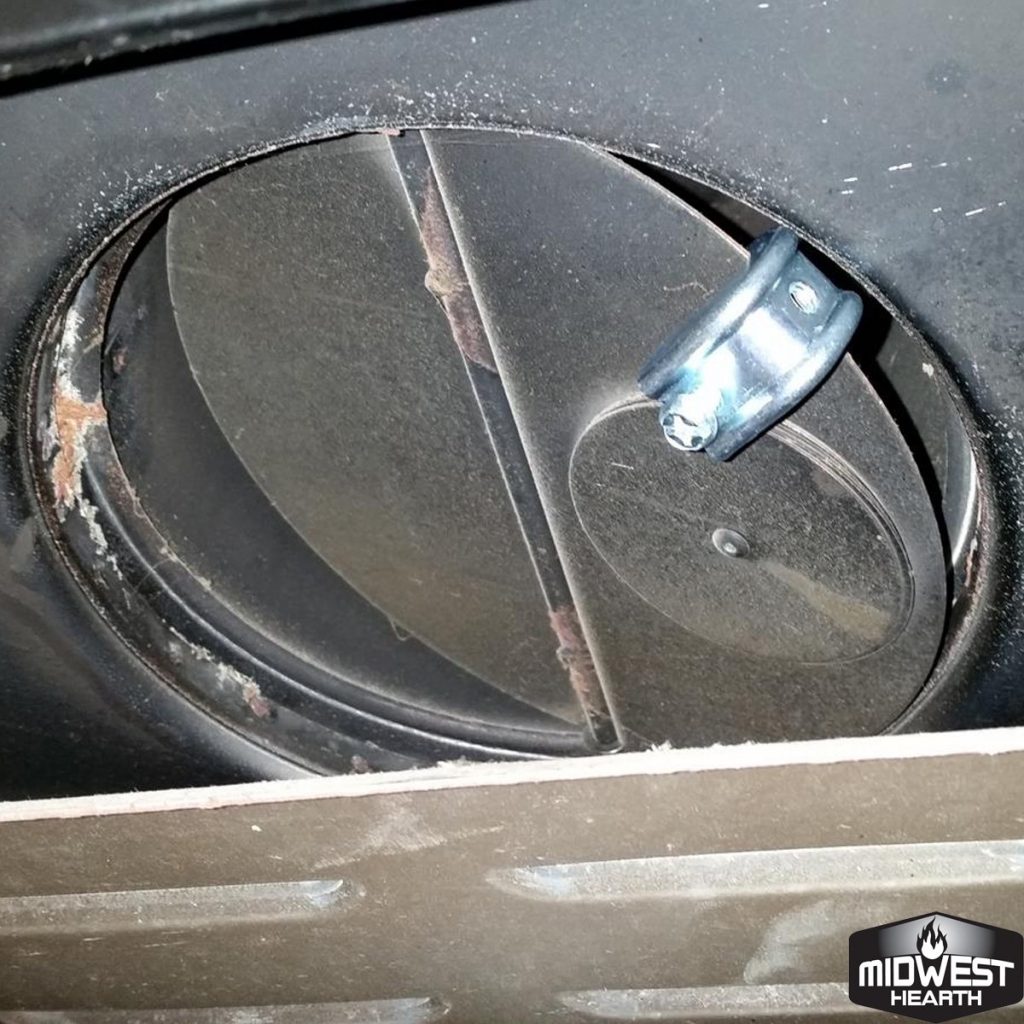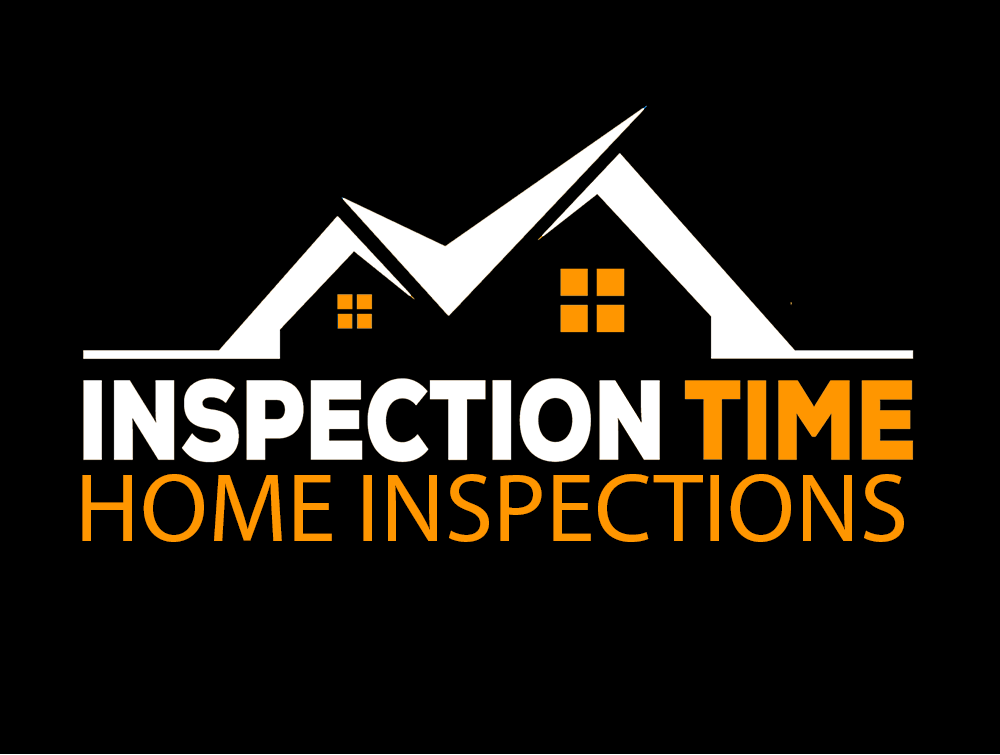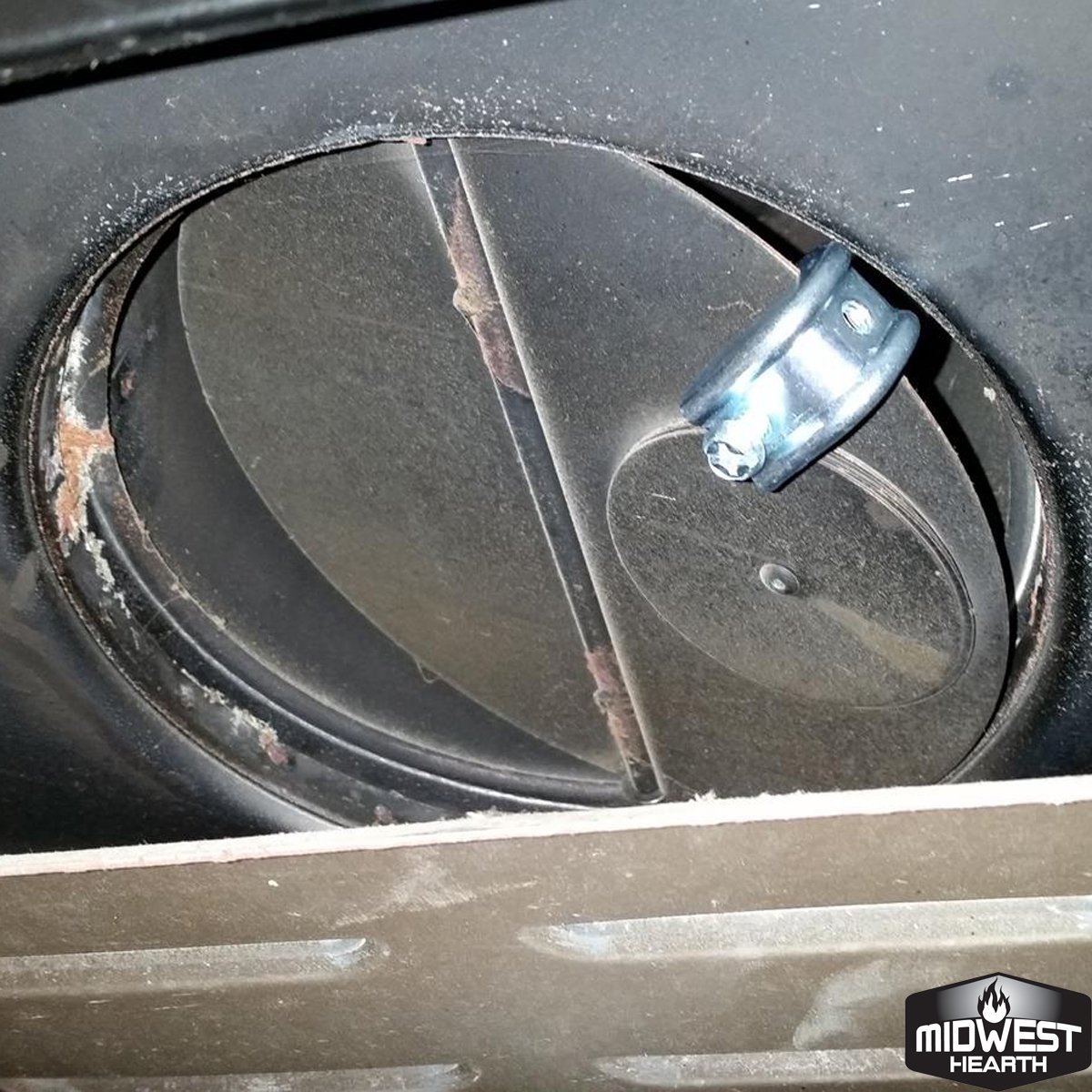By: Inspection Time | Aaron Davis CMI Trec#25498 | Professional Home Inspector

Gas fireplaces are a popular choice for many homeowners due to their convenience and efficiency. However, they come with specific safety requirements, one of which is the installation of a damper clamp. In this blog, we’ll discuss what a damper clamp is, the potential issues that can arise without it, and why it is crucial to ensure it is correctly installed and maintained.
What is a Damper Clamp?
A damper clamp is a small metal device that holds the damper of a fireplace in a slightly open position. In gas fireplaces, this is a critical safety feature because it ensures that the chimney or flue remains open, allowing harmful gases like carbon monoxide to escape from your home.
Why is a Damper Clamp Important?
- Safety: The primary function of a damper clamp is to ensure that the damper stays open, preventing the buildup of dangerous gases inside your home.
- Compliance: Many building codes and safety standards require the installation of a damper clamp on gas fireplaces.
- Ventilation: Proper ventilation is essential to the efficient operation of a gas fireplace. A damper clamp ensures that the venting system works correctly, improving air quality and efficiency.
Potential Issues Without a Damper Clamp
- Carbon Monoxide Poisoning: Without a damper clamp, the damper can accidentally close, trapping carbon monoxide and other harmful gases inside your home. Carbon monoxide is odorless and colorless, making it particularly dangerous as it can go undetected.
- Fire Hazards: A closed damper can cause the fireplace to overheat, potentially leading to a fire hazard.
- Reduced Efficiency: Proper ventilation is necessary for the efficient operation of your gas fireplace. A closed damper can reduce efficiency, leading to higher energy costs and less effective heating.
- Violation of Codes: Not having a damper clamp installed can result in violations of building codes and safety regulations, potentially leading to fines or other penalties.
How to Ensure Your Damper Clamp is Correctly Installed
- Professional Installation: Always have a certified professional install your gas fireplace and damper clamp to ensure it meets all safety standards and building codes.
- Regular Inspections: Schedule regular inspections of your gas fireplace to ensure the damper clamp is in place and functioning correctly.
- Proper Maintenance: Keep your fireplace and chimney clean and well-maintained to prevent any issues with the damper or ventilation system.
- Safety Checks: Test your carbon monoxide detectors regularly to ensure they are working and providing adequate protection.
Conclusion
A damper clamp is a small but crucial component of your gas fireplace that ensures safety, efficiency, and compliance with building codes. Without it, you risk carbon monoxide poisoning, fire hazards, reduced efficiency, and potential code violations. Ensuring that your damper clamp is correctly installed and maintained is essential for the safe and efficient operation of your gas fireplace.
Hashtags and Keywords
Hashtags: #GasFireplaceSafety #DamperClamp #HomeSafety #FireplaceMaintenance #CarbonMonoxidePrevention #HomeImprovement #BuildingCodes #FireplaceSafety #HVAC #HomeInspection
Keywords: damper clamp, gas fireplace safety, fireplace maintenance, carbon monoxide prevention, home safety, building codes, fireplace safety, HVAC, home inspection, gas fireplace damper
By understanding the importance of a damper clamp and taking steps to ensure it is properly installed and maintained, you can enjoy the warmth and comfort of your gas fireplace while keeping your home and family safe.

